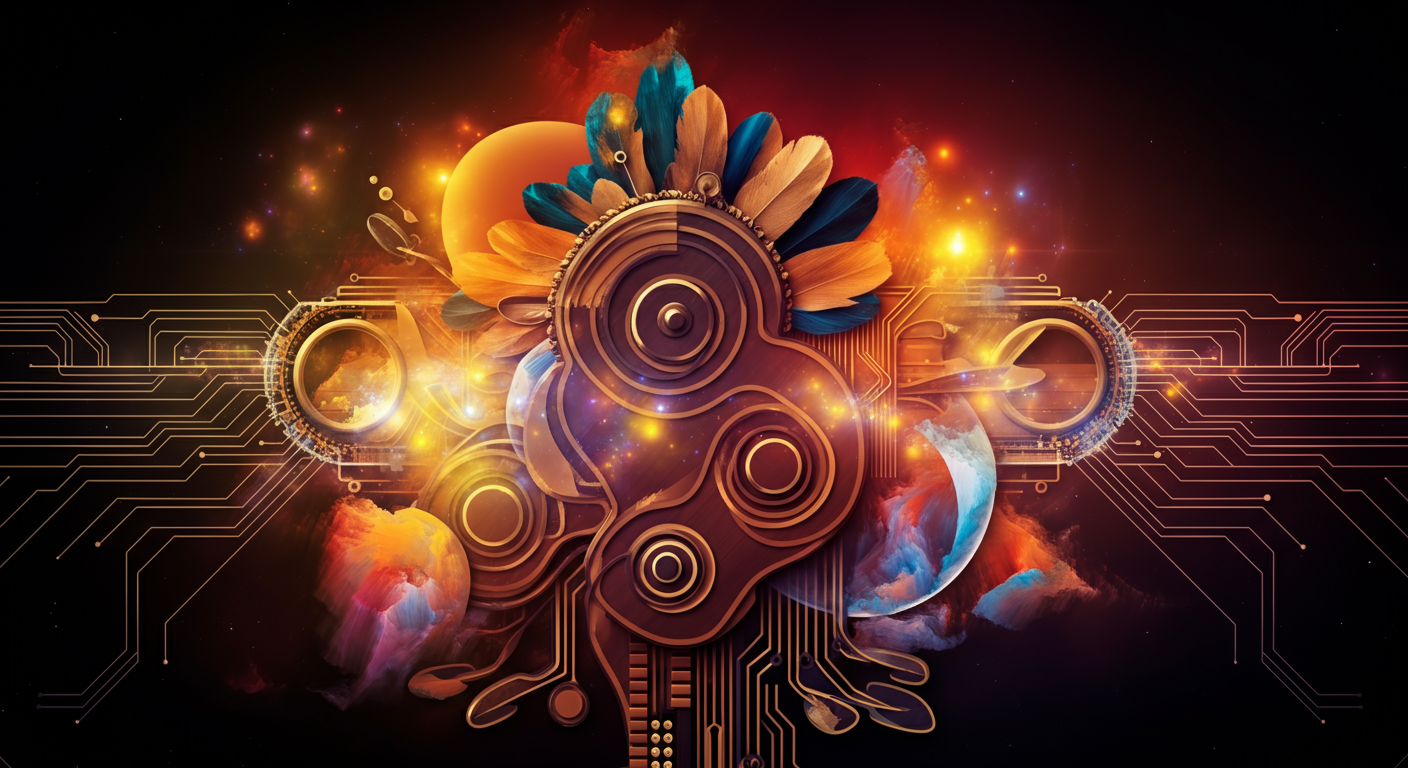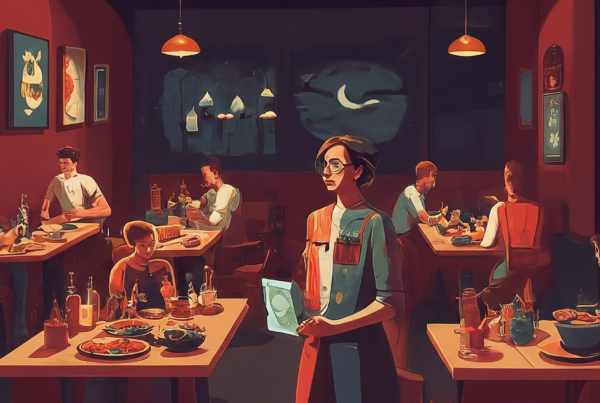In today’s rapidly evolving world, the preservation and celebration of cultural heritage have become more crucial than ever. For Native American tribes, maintaining a vibrant cultural identity while adapting to modern entertainment trends presents unique challenges and opportunities. At DLM Media, we understand the importance of creating cultural entertainment solutions that not only honor tradition but also engage and inspire communities.
Imagine a world where modern technology meets ancient traditions, where digital platforms become a canvas for storytelling, music, and dance that reflect the rich history of Native American tribes. This is not just a vision but a reality that businesses in the hospitality and entertainment industries can embrace. By integrating tailored entertainment solutions, casinos, restaurants, and bars can offer experiences that are both immersive and respectful of indigenous cultures.
Why is this important? For many Native American communities, entertainment is more than just leisure; it’s a means of cultural expression and community engagement. By investing in cultural entertainment solutions, businesses can foster a deeper connection with these communities, enhancing the customer experience and promoting cultural awareness. This approach not only benefits the businesses but also supports the tribes in preserving their heritage.
Throughout this blog post, we’ll delve into the myriad ways businesses can implement these solutions, from choosing the right programming to understanding the legal aspects of cultural representation. We’ll also explore success stories that highlight the positive impact of these initiatives, demonstrating how they can transform both businesses and communities. Join us on this journey as we uncover the potential of cultural entertainment solutions for Native American tribes and how they can enrich both corporate and community landscapes.
Understanding the Cultural Needs of Native American Tribes
Native American tribes possess a rich tapestry of cultural traditions and values that are integral to their identity and community cohesion. To create effective Cultural Entertainment Solutions for Native American Tribes, it is crucial to understand these unique cultural needs. This involves recognizing the importance of preserving traditions, fostering community engagement, and integrating cultural elements into entertainment offerings.
One successful example of cultural integration is the Cheyenne River Youth Project, which has demonstrated how cultural activities can be woven into community programs to engage and empower Native American youth. This initiative highlights the significance of cultural preservation in community building, offering a model for others to follow.
Preserving Traditions Through Cultural Events
Cultural events play a vital role in preserving the traditions of Native American tribes. These events, such as powwows, storytelling sessions, and traditional dance performances, provide a platform for tribes to celebrate their heritage and pass down ancestral knowledge to younger generations. The Cheyenne River Youth Project’s RedCan Graffiti Jam is a prime example, where traditional Lakota culture is celebrated through modern art forms like graffiti, creating a unique blend of past and present.
Moreover, these events encourage community participation and strengthen bonds among members. By incorporating traditional elements into entertainment solutions, businesses can support tribes in maintaining their cultural identity while also offering engaging experiences to visitors.
The Role of Community Engagement in Cultural Preservation
Community engagement is essential for the successful implementation of Cultural Entertainment Solutions for Native American Tribes. It involves actively involving tribal members in the planning and execution of cultural programs, ensuring that the solutions are tailored to their specific needs and preferences. This approach not only enhances the relevance of the programs but also fosters a sense of ownership and pride among community members.
For instance, the Cheyenne River Youth Project emphasizes community involvement in its initiatives, allowing tribal members to contribute their ideas and talents. This collaborative approach has led to the creation of culturally resonant programs that resonate deeply with the community.
Examples of Successful Cultural Programs
Several cultural programs have successfully engaged Native American communities by integrating traditional elements into modern entertainment formats. The RedCan Graffiti Jam, for example, combines contemporary graffiti art with traditional Lakota themes, offering a dynamic and culturally enriching experience.
Additionally, programs that focus on traditional crafts, language preservation, and storytelling have proven effective in engaging younger generations. These initiatives not only preserve cultural heritage but also provide educational opportunities and foster a deeper understanding of tribal history and values.
By understanding and addressing the cultural needs of Native American tribes, businesses can create entertainment solutions that are not only respectful and authentic but also deeply impactful. This approach not only enhances the customer experience but also supports tribes in preserving their rich cultural heritage for future generations.
Innovative Entertainment Solutions for Tribal Communities
In the quest to preserve and celebrate cultural heritage, Native American tribes are embracing innovative entertainment solutions that blend modern technology with traditional practices. These solutions not only enhance cultural expression but also foster community interaction, creating a dynamic and engaging environment for tribal members. By integrating cutting-edge technology with age-old traditions, tribes can offer unique entertainment experiences that resonate with both younger and older generations.
One of the key aspects of these solutions is the use of digital platforms to showcase cultural narratives through storytelling, music, and dance. For instance, virtual reality (VR) and augmented reality (AR) technologies are being employed to create immersive experiences that transport users into the heart of tribal stories and rituals. These technologies allow for a deeper understanding and appreciation of Native American cultures, making them accessible to a wider audience.
Modern Technology Meets Tradition
The integration of modern technology into tribal entertainment is transforming how cultural stories are told and experienced. Virtual reality (VR) and augmented reality (AR) are at the forefront of this transformation, offering immersive experiences that bring traditional stories to life. For example, VR can recreate historical events or sacred ceremonies, allowing participants to engage with their heritage in a deeply personal way.
Moreover, digital platforms enable the preservation of languages and oral traditions by recording and sharing them with a global audience. This not only helps in keeping the languages alive but also educates others about the rich cultural tapestry of Native American tribes. By leveraging technology, tribes can ensure that their cultural heritage is preserved for future generations while also engaging with contemporary audiences.
Traditional Methods in Modern Contexts
While technology plays a significant role, traditional methods remain vital in tribal entertainment. Events such as powwows, traditional dance performances, and storytelling sessions continue to be central to cultural expression. These gatherings provide a platform for tribes to celebrate their heritage and pass down ancestral knowledge.
Incorporating traditional elements into entertainment solutions not only honors the past but also enriches the cultural experience for participants. For example, the Cheyenne River Youth Project’s RedCan Graffiti Jam combines modern art forms like graffiti with traditional Lakota themes, creating a unique blend of past and present. This approach ensures that cultural traditions remain relevant and engaging in today’s world.
Comparing Entertainment Solutions
To better understand the diverse range of entertainment solutions available to Native American tribes, it is helpful to compare different approaches. The table below highlights various solutions, their key features, and their impact on cultural preservation and community engagement:
| Solution | Key Features | Impact |
|---|---|---|
| Virtual Reality Experiences | Immersive storytelling, cultural education | Enhances cultural understanding, attracts younger audiences |
| Traditional Powwows | Dance, music, storytelling | Preserves traditions, strengthens community bonds |
| RedCan Graffiti Jam | Modern art, traditional themes | Blends past and present, engages diverse audiences |
By examining these solutions, businesses and organizations can identify opportunities to support Native American tribes in their efforts to preserve and promote their cultural heritage. Whether through technology or traditional methods, the goal remains the same: to create meaningful and engaging cultural entertainment experiences that resonate with both tribal members and visitors alike.
Challenges and Opportunities in Cultural Entertainment
Implementing Cultural Entertainment Solutions for Native American Tribes presents a unique set of challenges and opportunities. While the preservation and celebration of cultural heritage are crucial, there are significant barriers that tribes face in achieving these goals. However, with the right strategies and support, these challenges can be transformed into opportunities for growth and development.
One of the primary challenges is the limitation of funding and resources. Many tribes struggle with securing the necessary financial support to develop and sustain cultural programs. This lack of funding can hinder the ability to organize events, hire skilled performers, and invest in technology that can enhance cultural experiences. Additionally, there is often a shortage of resources such as venues, equipment, and expertise needed to execute these programs effectively.
Overcoming Funding and Resource Limitations
To address funding challenges, tribes can explore various avenues for financial support. One effective strategy is to establish partnerships with businesses and organizations that share a commitment to cultural preservation. By collaborating with entities like DLM Media, tribes can access resources and expertise that can help in the development of sustainable cultural programs.
Moreover, applying for grants from government agencies and cultural foundations can provide the necessary financial backing. For instance, initiatives like the National Endowment for the Arts offer grants specifically aimed at supporting cultural projects. These funds can be used to cover costs related to event organization, equipment purchase, and training programs for tribal members.
Embracing Technological Innovations
Another opportunity lies in leveraging modern technology to enhance cultural entertainment. Technologies such as virtual reality (VR) and augmented reality (AR) can create immersive experiences that bring traditional stories and practices to life. By integrating these technologies, tribes can attract a wider audience and engage younger generations who are more inclined towards digital experiences.
For example, VR can be used to recreate historical events or sacred ceremonies, allowing participants to engage with their heritage in a deeply personal way. This not only enhances cultural understanding but also ensures that traditions are preserved in a format that resonates with contemporary audiences.
Fostering Community Engagement
Community engagement is essential in overcoming challenges and maximizing opportunities in cultural entertainment. By involving tribal members in the planning and execution of cultural programs, tribes can ensure that these initiatives are tailored to their specific needs and preferences. This approach not only enhances the relevance of the programs but also fosters a sense of ownership and pride among community members.
Engaging the community can also lead to the discovery of hidden talents and resources within the tribe. By encouraging participation in cultural events, tribes can identify individuals with skills in storytelling, music, dance, and other art forms. These individuals can then play a crucial role in preserving and promoting the tribe’s cultural heritage.
In conclusion, while there are significant challenges in implementing Cultural Entertainment Solutions for Native American Tribes, there are also numerous opportunities for growth and development. By addressing funding limitations, embracing technology, and fostering community engagement, tribes can create vibrant cultural programs that preserve their heritage and inspire future generations. For more insights on how businesses can support these initiatives, explore our other articles on DLM Media.
Embracing Cultural Entertainment for a Thriving Future
As we navigate the intersection of tradition and modernity, Cultural Entertainment Solutions for Native American Tribes offer a path forward that honors heritage while embracing innovation. These tailored solutions not only preserve the rich cultural tapestry of Native American tribes but also enhance community engagement and foster a sense of identity among tribal members.
Throughout the blog post, we explored the importance of understanding the unique cultural needs of Native American tribes. By integrating traditional elements into entertainment offerings, businesses can create experiences that resonate deeply with both tribal members and visitors. This approach not only supports cultural preservation but also strengthens community bonds and fosters a sense of pride and ownership.
Incorporating modern technology into cultural entertainment solutions presents exciting opportunities to engage younger generations and reach a wider audience. Whether through virtual reality experiences or digital storytelling platforms, these innovations can bring traditional narratives to life in ways that are both immersive and educational. By embracing these technologies, tribes can ensure that their cultural heritage remains vibrant and relevant in today’s world.
- Preservation of Heritage: Tailored entertainment solutions help preserve cultural traditions for future generations.
- Community Engagement: Involving tribal members in cultural programs fosters a sense of ownership and pride.
- Technological Integration: Modern technologies like VR and AR create immersive cultural experiences.
- Business Opportunities: Businesses can enhance customer experiences by offering culturally enriched entertainment.
As we look to the future, the potential of Cultural Entertainment Solutions for Native American Tribes is immense. By supporting these initiatives, businesses can play a pivotal role in preserving cultural heritage while also benefiting from enriched customer experiences. We invite you to explore more on this topic and discover how you can make a difference. Visit DLM Media for more insights and to learn how you can contribute to these cultural initiatives.





